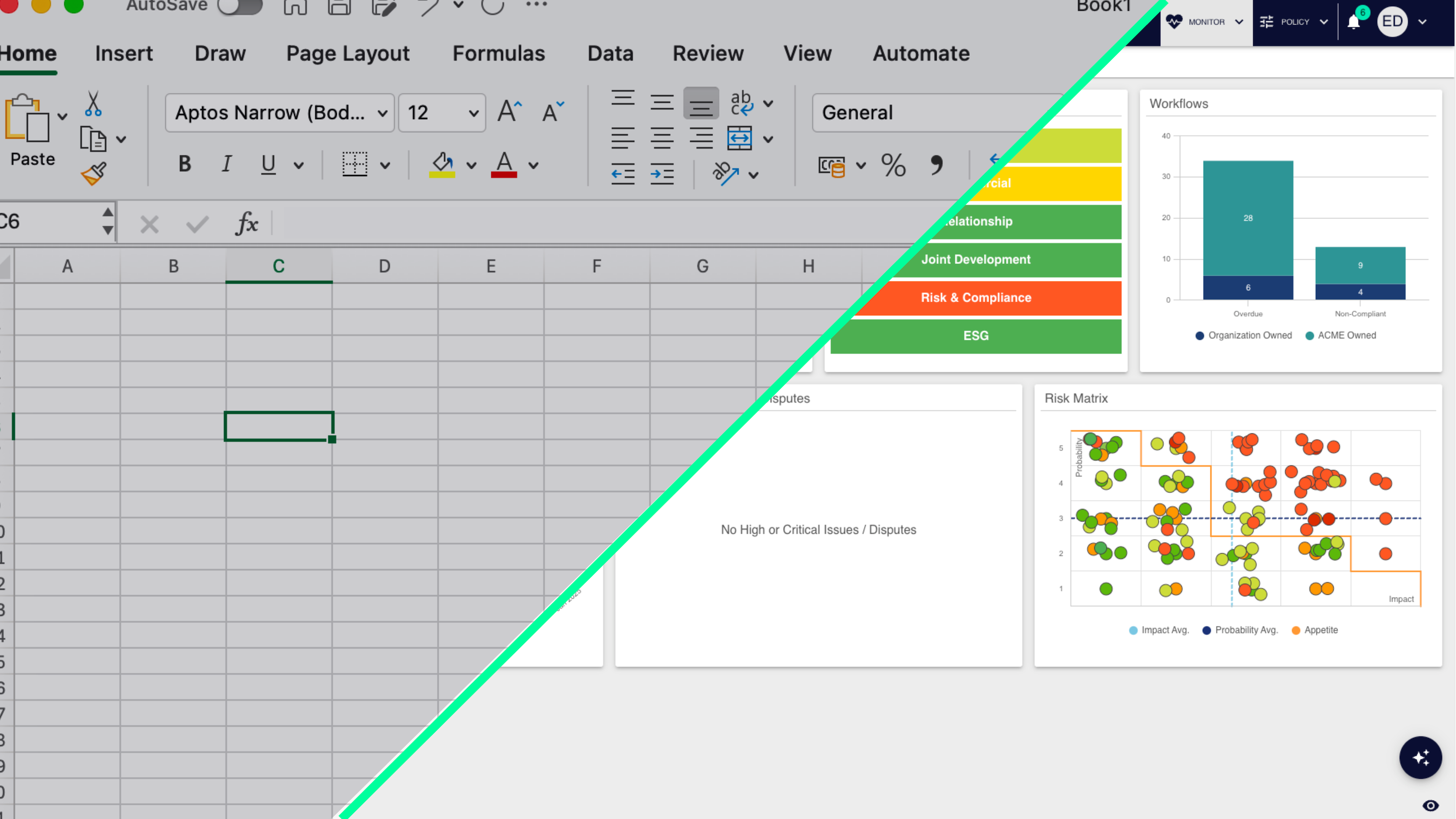Outsourcing is a growing global industry and helps organisations to cut costs, improve efficiency and innovate. The Global spend on outsourcing in 2023 was predicted to hit $731 billion in 2023, according to Deloitte, and prediction of continued growth.
Although third parties offer wide opportunities to businesses, they also introduce various risks that organisations must effectively manage to safeguard their operations, reputation, and stakeholders’ interests.
By understanding the fundamental goals and procedures of Third Party Risk Management (TPRM), companies can develop robust strategy and the procedures needed to mitigate risks proactively and ensure resilience across their supplier ecosystem.
Having clear goals in place can demystify the complexities of third-party risk management. Additionally, it explores the desired outcomes for suppliers within the TPRM ecosystem and provides insights into the strategies and systems required to achieve them effectively.
Below we highlight the key goals for your Third-Party Risk Management strategy.
Key Goals of Third-Party Risk Management:
- Comprehensive Risk Assessments: Conduct thorough risk assessments against suppliers to identify potential risks associated with their business operations, contractual obligations, and delivery capabilities.
- Enhanced Risk Visibility: Gaining visibility into multi-dimensional risk touchpoints across the supply chain, including inherent risks, contractual risks, and delivery risks, to enable informed decision-making and proactive risk mitigation.
- Proactive Risk Mitigation: Proactively identifying and mitigating risks before they materialise, thereby minimising the likelihood of adverse impacts on the organisation’s operations and reputation.
- Efficient Incident Response: Establishing efficient incident response mechanisms to address known risks promptly and effectively, minimising disruptions to business operations and mitigating the impact on stakeholders.
Desired Outcomes for Suppliers:
By creating goals for your TPRM strategy you can gain insight into what your desired outcome is from your suppliers. Using the above goals, the outcomes could be following:
- Enhanced Oversight and Management: Ensuring enhanced oversight and management of third-party risks across the business and supply chain.
- Identification and Mitigation of Risks: Identifying and mitigating potential risks associated with third-party vendors and suppliers.
- Enhanced Compliance: Ensuring compliance with regulatory requirements and internal risk management standards within the third-party ecosystem.
- Strengthening Resilience: Strengthening organisational resilience by fostering resilient third-party relationships and supply chains.
- Ongoing Assessment and Monitoring: Implementing robust assessment and monitoring processes to continuously evaluate third-party risks and adapt risk management strategies accordingly.
- Effective Communication and Collaboration: Facilitating enhanced communication and collaboration between internal stakeholders and external third parties to address risk-related concerns proactively.
- Efficiency and Effectiveness: Ensuring the efficient and effective allocation of resources and streamlining processes to optimise TPRM capabilities.
- Accountability and Transparency: Maintaining accountability and transparency in risk management activities to demonstrate compliance with regulatory requirements and internal policies.
- Continuous Monitoring: Continuously monitoring third-party risks and adapting risk management strategies to evolving threats and regulatory changes.
Implementing the right Strategy & Procuredures
To achieve your goals and desired outcomes you need to have a TPRM strategy in place to effectively manage your third-party suppliers. When it comes to creating a strategy, be sure to consider the following:
- Standards and Certification Checks: Aligning with industry standards and certifications to set the bar for acceptable risk management practices.
- Periodic Self-Check-ins and Reporting: Implementing self-assessment and reporting mechanisms to ensure ongoing compliance with risk management standards and certifications.
- Best Practice Risk Category Self-Assessment: Conduct risk category self-assessments based on industry best practices to identify and prioritize risks.
- Metrics and Controls for Evidence of Healthy Systems: Establishing metrics and controls to provide evidence of operational integrity and compliance with risk management standards.
- Remedial Activity and Case Management: Defining remedial activities and implementing case management processes to address identified risks promptly and effectively.
- Control Design and Categorisation for Impact Analysis: Designing controls and categorising risks to facilitate impact analysis and prioritize risk mitigation efforts.
- Data Insights Feed and Sensors for Real-time Monitoring: Leveraging data insights feeds and sensors to monitor third-party risks in real-time and detect anomalies or deviations from expected standards.
- Situational Awareness and Triage: Implementing automated triage mechanisms to detect and respond to anomalies promptly, minimising the impact on business operations.
Procedures – Goals and Outcomes
Effective third-party risk management is essential for companies to navigate the complexities of today’s business environment successfully. By aligning with the key goals and outcomes outlined in this blog and implementing a robust strategy and procedures, organisations can enhance their TPRM capabilities and ensure resilience across their supplier ecosystem. Through proactive risk mitigation, efficient incident response, and ongoing monitoring, businesses can safeguard their operations, reputation, and stakeholders’ interests in an increasingly interconnected world
Download our TPRM Whitepaper
For an in-depth exploration of Third-Party Risk Management, download our comprehensive whitepaper. It covers the necessity, key components, and actionable steps for implementing robust TPRM frameworks. Learn how to align strategies with corporate objectives, establish effective governance, and mitigate risks to ensure long-term success.


